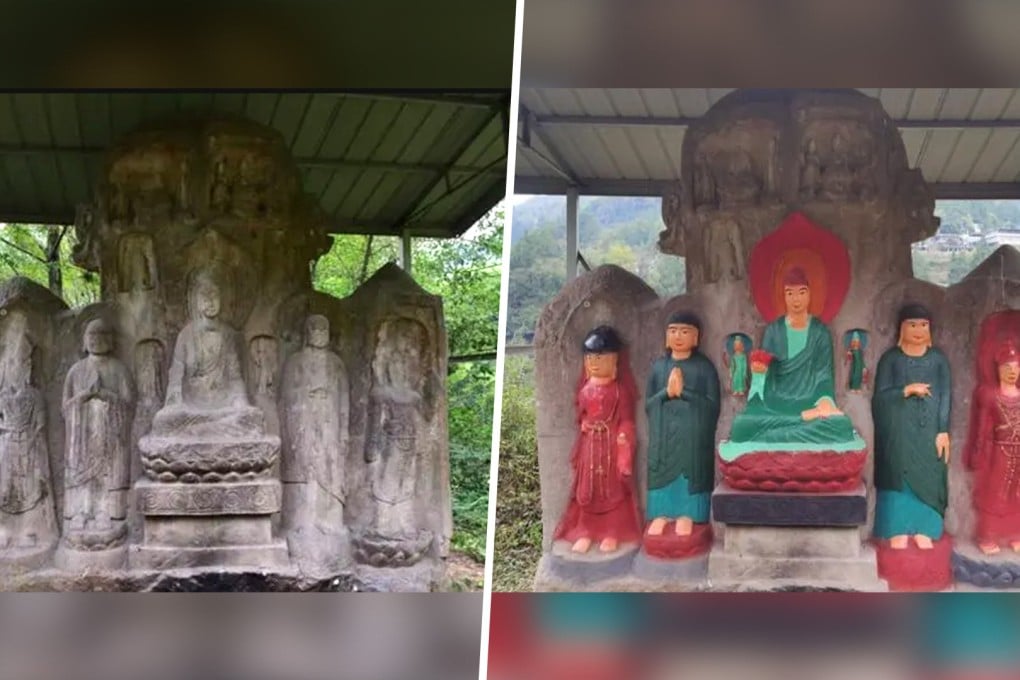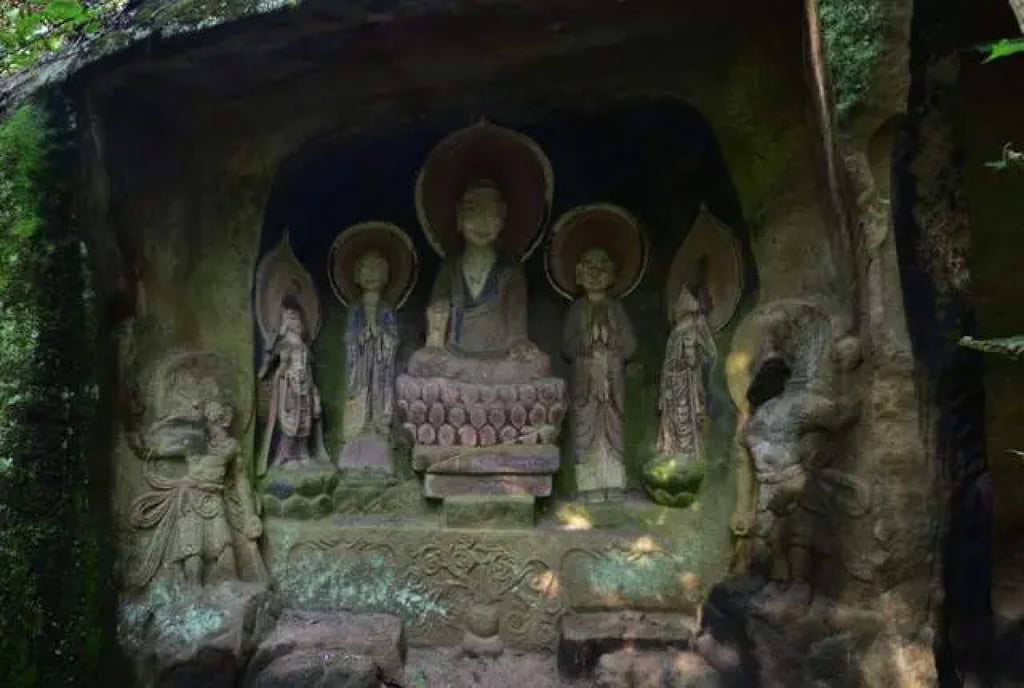‘Hard to accept’: China villagers give 1,400-year-old Buddhist statues innocent paint job of thanks, damage artefacts
- Statues discovered on 3,000-year-old transportation route
- Experts research ways of removing paint, restoring sculptures

A set of 1,400-year-old Buddhist statues have been damaged by innocent villagers in China who painted them with bright colours to thank the gods for helping them fulfil their dreams.
Located on a remote mountain in Nanjiang county in Sichuan province, southwestern China, the statues are on a historic transportation route known as the Micang Ancient Road which dates back 3,000 years, according to the Sichuan Daily.
The figures, of different sizes, were carved during the Northern Wei Period (386-534), experts said, adding that they were of “important value” in demonstrating the spread of Buddhism in Sichuan and nearby regions in ancient China.
Discovered two years ago, the relics had yet to be included as a cultural protection unit but local authorities had erected a rain awning over the site and installed surveillance devices.

Officials from the county’s cultural relic authority recently discovered from the surveillance footage that villagers were painting the relics with gaudy colours.
By the time officials arrived to try and put a stop to the damage, the painting had been finished, the report said.